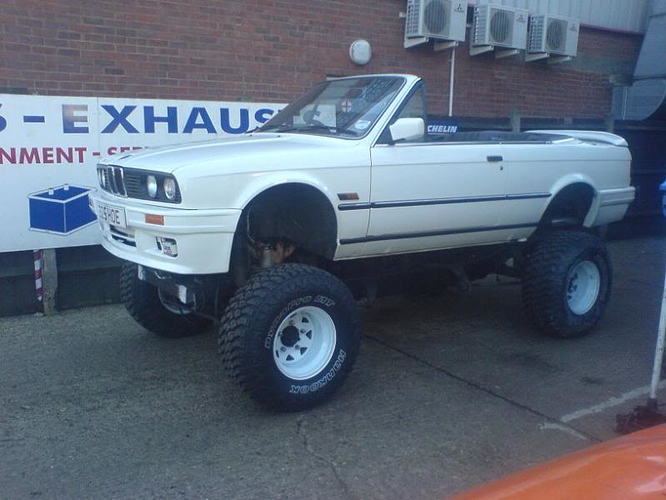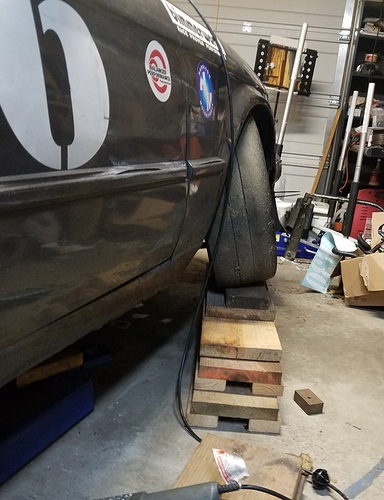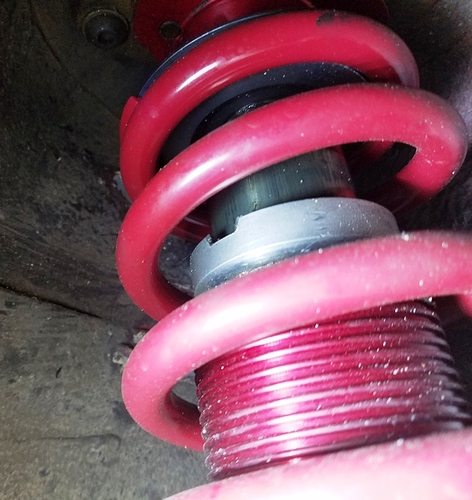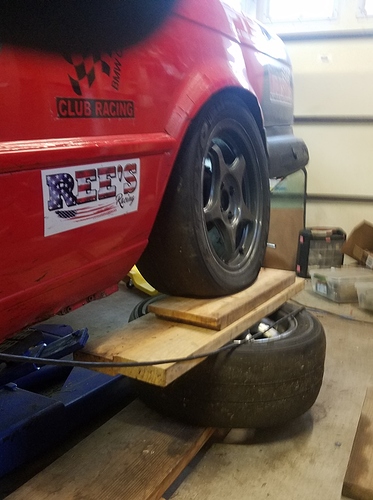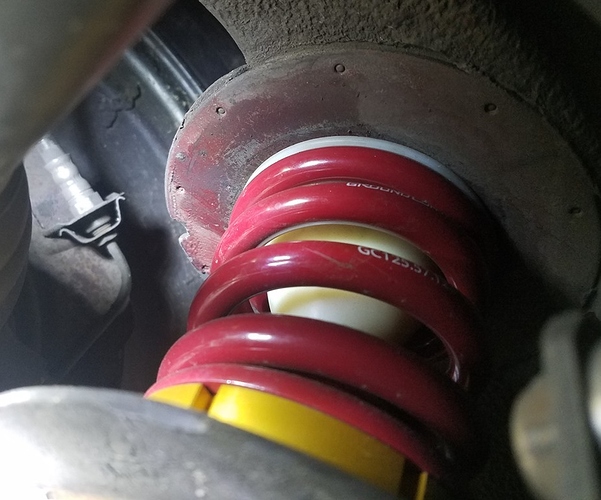Victor Tate wrote something in fb re. this issue that I though would be best replied here. Saying anything useful on fb is such a waste of time because in a couple hours it’s gone forever. Victor suggested that this is a spring length issue.
I don’t think it’s spring length. It’s hard to puzzle thru the geometry of this with someone because the both of us really need to be looking at a front strut. One should take a pic of their front strut/spring assembly with the car at rest, and then do it again when the front corner is compressed. The limiting factor is actually the height of the strut housing. In a perfect world, it would be about 2-3"" shorter.
Take a look at the front strut pics in the forum thread. That’s the only way this is going to make any sense.
On top of the front strut is the strut retention collar, . The strut shaft emerges from that and goes up to the spring top hat. But because our cars are lowered so much, the strut shaft doesn’t poke up very far. That “doesn’t poke up very far” means a pretty limited range of motion for the strut shaft.
By raising the car using the adjustable perch, one can move the top hat farther away from the strut retention collar. This gives you more “bump travel”. That is to say, the strut shaft will happily compress more. Lower the car, by turning the adjustable perch down a few threads, and the top hat comes down closer to the retention collar and you lose bump travel. This is because lowering the perch lowers the spring which lowers the tophat.
The strut shaft seems to bottom out with about 23mm of it peaking out above the adjusting collar. So if your car is really low, say you’ve set the adjustable perch down low on the red threaded cylinder so that the top hat is only 43mm above the strut retention collar, you’re now only allowing the strut shaft to compress down 20mm. Sure, you’ve got 43mm of strut shaft visible, but it only goes down to 23mm before hitting the bump stop. 20mm of bump travel probably isn’t enough.
If you use the adjustable perch to raise the car 10mm, you end up with 53mm of strut shaft showing. Now you have 30mm of bump travel.
The taller spring idea. We can replicate the impact of a taller spring by putting some turns into the adjustable perch and threading it up the red threaded cylinder. This raises the car. There’s lots of available threads there so we could replicate a much taller spring if we wanted. So all a taller spring would do is limit how low we can drop the car.
Re. car height should be adjusted with control arms parallel to ground. That’s a weakness of turning a DD into a race car. Our suspension just wasn’t designed for what we’re doing.
Back to the issue of bump travel, new vs. old. I’ve been thinking about the geometry of all of this and looking hard at the design of the OEM spring hat vs. GC spring hat.
The CA guys figured out that with our old springs we were banging on our bumpstops a lot. Based on my car’s old ride height, and having screwed with the struts now night after night, it’s pretty clear to me that we had about 30mm of bumptravel. Not a way in shit we have more than 35mm. Folks that get bigger #s are probably measuring the amount of strut shaft sticking up at rest, and not spotting the fact that the strut will not go all the way down. In compression the strut shafts stops at about 23mm (measured from gland nut to the top hat) still showing. So in order to get 30mm of bump travel, the top hat needs to be 53mm above the gland nut. We have 40-47% (depending on who you believe) stouter springs now, so we end up in the same situation, in terms of how often we hit the bumpstops, if we set our car to 18mm of bump…totally not enough bump travel. That is to say, imagine a bump that would use up all 30mm of bump travel with our old springs. Because our new springs are so much stouter, that same bump would use up only 18mm of bump travel. So there is just no way we are worse off for bump travel with our new springs.
I’m thinking that 30mm of bump travel is about as low as you’d want to put your car. If you’re going to a track that is tough on suspensions, maybe go with 40mm of bump travel.
We really need more data points tho. I found 10mm of front sag and about half that in the rear. But we can’t rely on that until we get corroborating #'s.
Last night I found that I had 30mm of bump travel at one front corner and 20mm on the other. The delta was due to some cornerweighting efforts a couple weeks ago where I had to drop a corner to take some weight off of it. In order to compensate for perceived spring sag, I added 10mm to both sides. So now I have 40mm and 30mm of bump travel.



